Beit Hanoun, Palestine 26 November 2006
This narrative and photostory by Dr. Bill Dienst are based on an interview with Dr. Mona El-Farra, from the Union of Health Workers Committee in Gaza City and a visit to Beit Hanoun with the Gaza Community Mental Health Programme (GCMHP) on 16 November 2006.
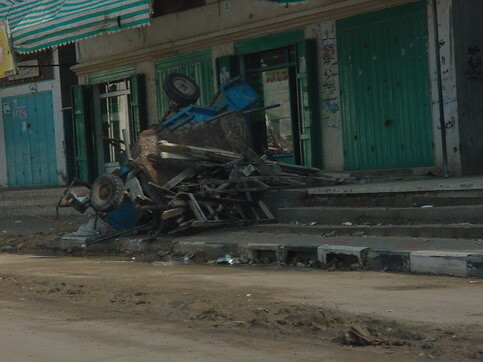
We saw widespread devastation as we drove into Beit Hanoun. (Dr. Bill Dienst)
Introduction
Between the 2nd and 8th of November 2006, the town of Beit Hanoun (population 28,000) was under a siege and blockade by Israeli Occupation Forces (IOF). Beit Hanoun is located in the northern Gaza Strip, immediately south of the Apartheid Wall around Gaza and Erez Crossing with Israel.
The besieged residents of Beit Hanoun suffered widespread collective punishment, such as a cut off of electricity and water. House to house searches were conducted, and males over the age of 16 years were summarily rounded up, imprisoned and interrogated. Many families were forced to huddle into rooms away from windows because Israeli snipers were on the rooftops killing people.
A group of 150 unarmed women performed a nonviolent protest in an effort to free their men, who were imprisoned inside the mosque. Two of these women were shot dead, and 20 were injured.
The adverse health effects on the people of Beit Hanoun were numerous. Chronic conditions, like diabetes and asthma, had to be left without treatment during the siege. Casualties were not permitted to be evacuated to Al Awda hospital in the nearby larger town of Jabalya, except with careful coordination with the IOF. Several trauma victims who could have been saved died due to delays in evacuation.
Mr. Hamad, for example, bled to death after waiting two hours to evacuate. Medical rescue workers were also under fire.
Mass casualties arrived at Al Awda hospital in Jabalya (population 50,000). Doctors there have witnessed unusual traumas that do not fit previous patterns. For example, extensive internal burns, amputated limps with cauterized stubs, unusual shrapnel traumas, lacerations with contracted skin not amendable to suturing, etc. There were also cases of patients who initially seemed to have minor injuries, which subsequently failed to heal, and some of these patients died later.
The Israeli military has admitted it is using a new type of weapon, but will not specify the nature of the agent. It is probably some sort of chemical weapon. Sophisticated international forensic investigation is needed to clarify the nature of this agent that is being used.
On 8 November 2006, the IOF ended the siege as a result of mounting international and UN pressure and pulled out. People throughout Beit Hanoun went to bed that night thinking they would finally be able to rest after six days of a horrible siege.
Unfortunately, on the morning of 9 November 2006 at approximately 0430, an apartment building, which housed about 120 people, was directly shelled multiple times by the Israeli military.
According to Majdi El-Athamina, a surviving member of the family who is in his forties, 20 have now died as a result of this shelling. Sixteen died in the apartment ruins where we are standing, and four died out in the street. Four of these were his immediate relatives, his three brothers and one of his sons. The deaths include 14 more extended relatives and two of his neighbors.
Forty-five have been injured, and 32 are still hospitalized as of 16 November 2006. These injuries are a direct result of physical trauma sustained during the shelling of this apartment.
Mr. El-Athamina was asleep in his bedroom when the shelling started. He says the apartment was shelled directly about 13 to 15 times continuously over a period of less than 10 minutes. He states that the first shell hit the stairwell to make it difficult for people to evacuate the building. He tells me that three of his brothers were killed, his nine-year-old son, Sa’ad, was killed, and his wife and another son were seriously injured. By the will of God, he says, he was left unharmed.
The Israeli military is claiming that the attack on this Beit Hanoun apartment was accidental; that it somehow had to do with a malfunction of one of the computer chips that was setting the coordinates for the attack. Majdi El-Athamina tells me he is certain the attacks were deliberate. Israeli snipers were in his apartment, and up on the rooftop for several days during the siege and before the attack. He says they knew exactly what they were shelling as a result. “Why did they target you?” I ask. “Ask Mr. Olmert!” is his response.
According to Dr. Mona El-Farra, a Union of Health Care Workers physician at Al-Awda Hospital in Jabalya, mass casualties started arriving at her hospital at 0530. It was utter chaos. Two rescue workers were hit and killed trying to rescue the injured. Al Awda hospital received 12 dead from the El-Athamina family, with only one three-year-old female survivor, Dina, who is still being treated for serious injuries.
Eighty-five Palestinian people have been killed in Beit Hanoun as a direct result of this siege and its aftermath. A further 118 have been killed by the IOF in the West Bank and Gaza so far in November 2006, and most are civilians. A photostory, showing the effects of the aftermath, photographed by me on 16 November 2006 now follows:
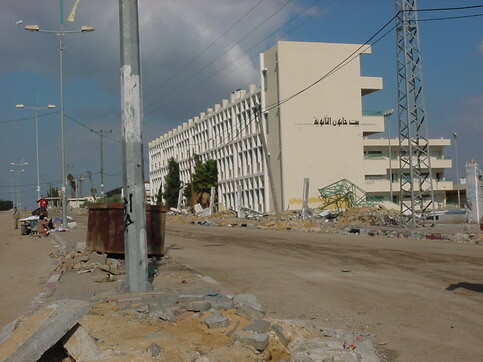
The secondary school in Beit Hanoun sustained extreme damage from tanks, shelling and bulldozers.(Dr. Bill Dienst)

Here is a zoom lens view of the spy blimp. (Dr. Bill Dienst)
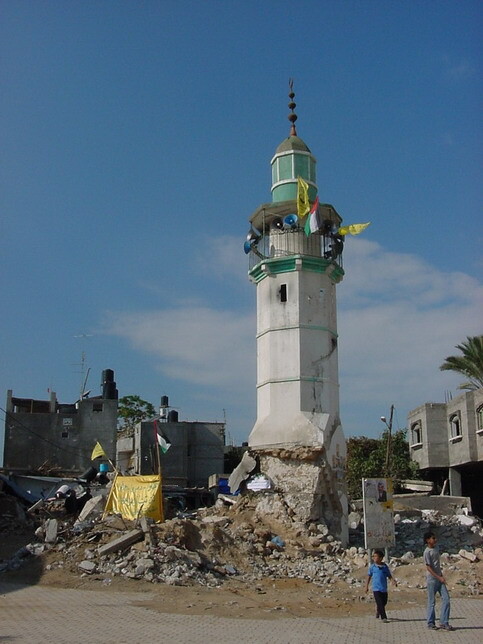
The mosque in the center of Beit Hanoun that was destroyed in a calculated and mockingly cruel humiliating manner, leaving only its minaret standing. (Dr. Bill Dienst)
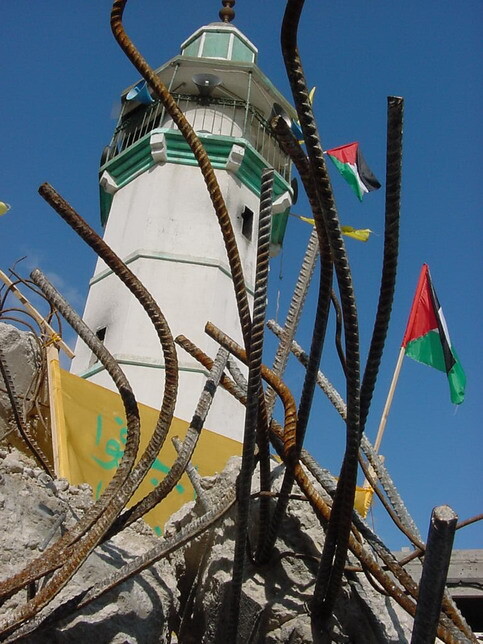
The mosque in the center of Beit Hanoun that was destroyed in a calculated and mockingly cruel humiliating manner, leaving only its minaret standing. (Dr. Bill Dienst)
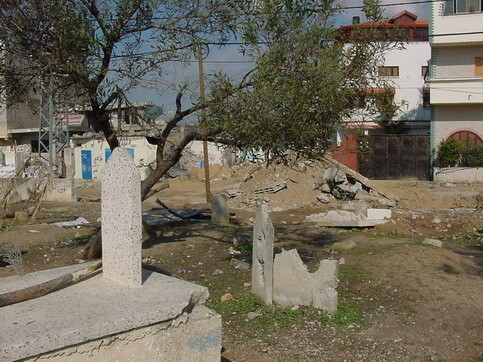
Near the mosque is a cemetery which suffered extensive grave desecration. (Dr. Bill Dienst)
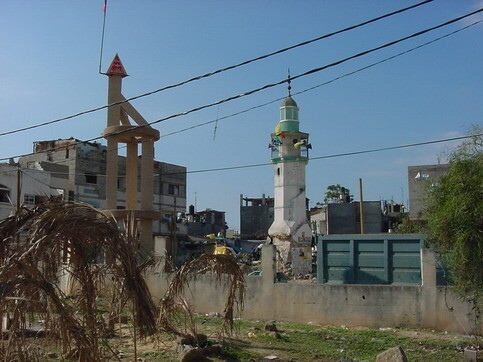
Near the mosque is a cemetery which suffered extensive grave desecration. (Dr. Bill Dienst)
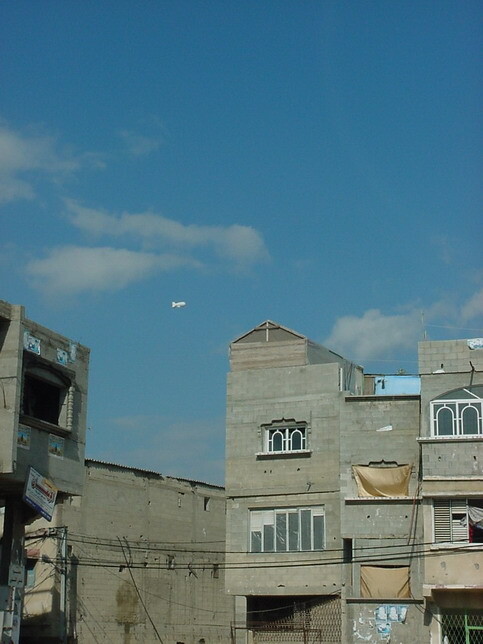
The Israeli Blimp with spy camera located over the border at Eretz Crossing keeps a close watch over the people of Beit Hanoun. (Dr. Bill Dienst)
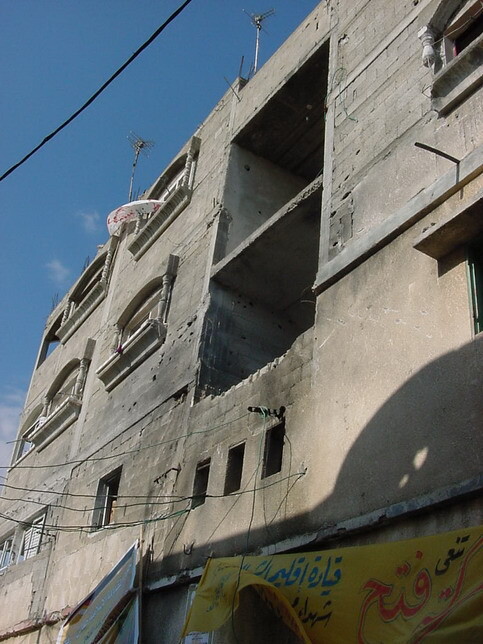
The stairwell of the apartment, which was hit first from the south, in order to impede evacuation from the apartment. (Dr. Bill Dienst)
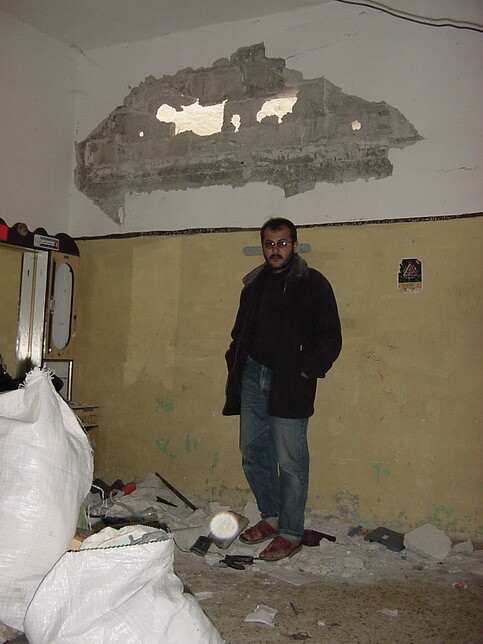
Majdi El-Athamina inside one of the apartments with damage from shells which were fired from the south. (Dr. Bill Dienst)
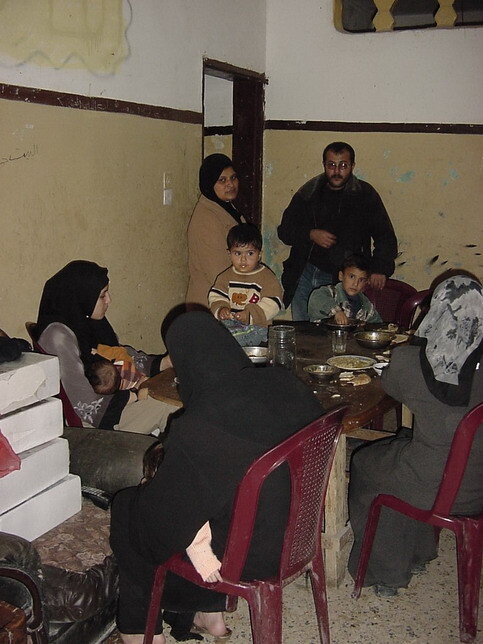
Majdi with surviving members of his extended family having a meal inside the ruins of their devastated apartment. (Dr. Bill Dienst)

Inside an apartment on the top floor, which took a mortar through the roof. (Dr. Bill Dienst)

View from the rooftop looking Southeast toward the center of Beit Hanoun. (Dr. Bill Dienst)
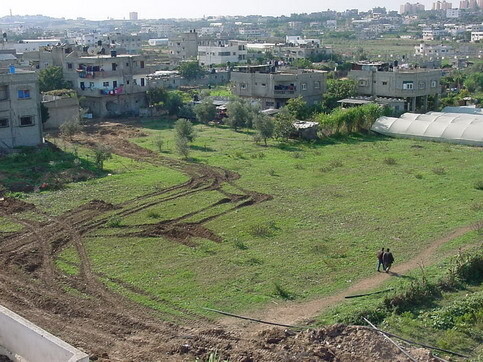
View from the rooftop toward the Southwest. Note the tank tracks. Tanks were present immediately outside the apartment for several days during the siege. (Dr. Bill Dienst)
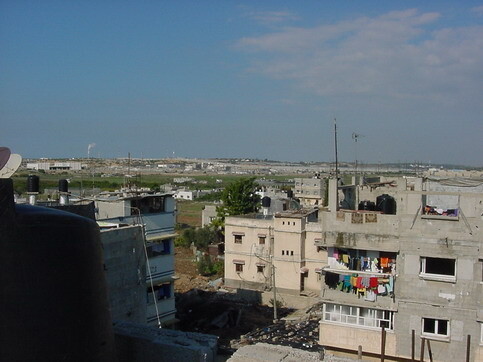
View to the Northwest from the rooftop. The smokestack from the coal fired power plant south of the Israeli town of Ashkalon and the Apartheid wall around Gaza can be seen on the horizon. (Dr. Bill Dienst)
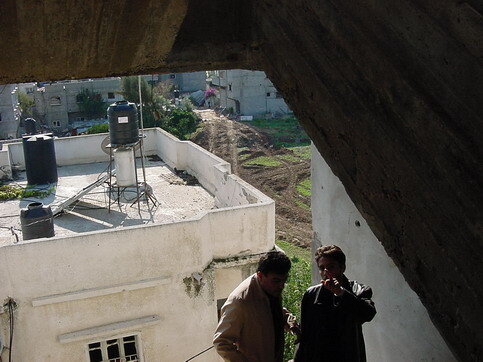
The stairwell of the apartment, which was hit first from the south, in order to impede evacuation from the apartment. (Dr. Bill Dienst)

We see widespread devastation as we drive into Beit Hanoun. (Dr. Bill Dienst)

We see widespread devastation as we drive into Beit Hanoun. (Dr. Bill Dienst)
Dr. Bill Dienst is a rural family and emergency room physician from Omak, Washington, USA.





